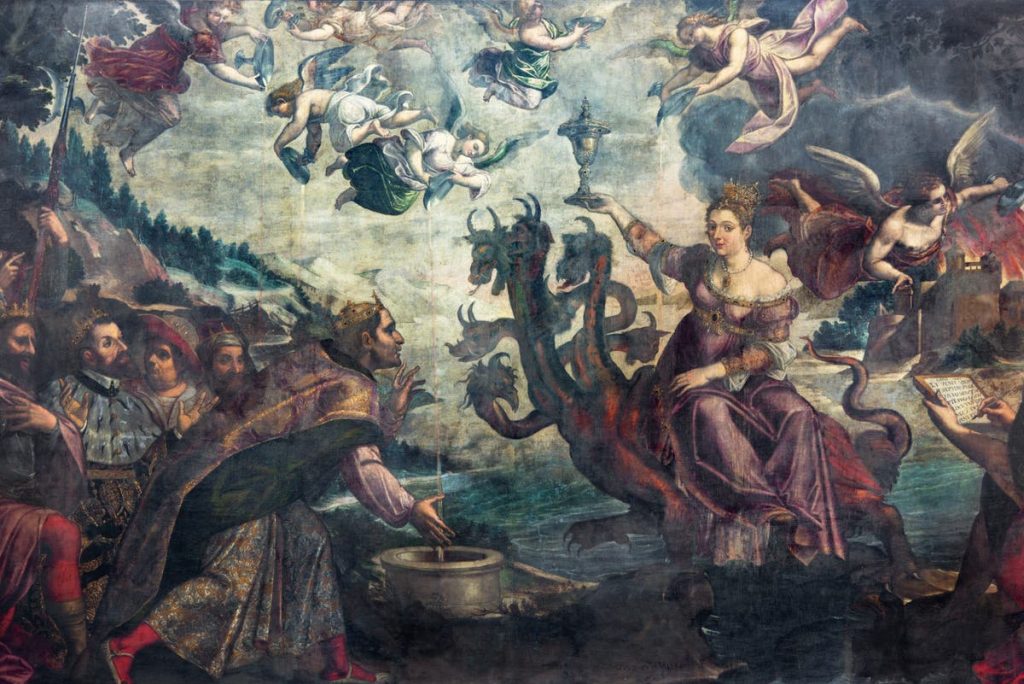Dinner Conversations Take a Dark Turn: Apocalypse Talk Goes Mainstream

Over dinner, you’re now likely to encounter talk about the “apocalypse.” Nuclear war, climate change, deadly diseases, and artificial intelligence (AI) are no longer just topics for science fiction. They’re becoming everyday discussions. This shift might seem sudden, but it reflects the growing anxieties people have about the future.
According to professors Erik Bleich and Christopher Star from Middlebury College, discussions about the apocalypse are more frequent now. They analyzed media trends from 1980 to 2023 and found an increasing number of articles mentioning “apocalypse” or “apocalyptic” terms. This suggests that public concern about these global threats is on the rise.
Rising Fears and Frequent Conversations
Conversations about the “apocalypse” are becoming more common at dinner parties and social gatherings. People now frequently discuss topics like nuclear war, climate change, diseases, and artificial intelligence (AI) when they meet. Something that once felt confined to movies or books is now part of everyday life.
Professors Erik Bleich and Christopher Star from Middlebury College noticed this trend. They studied articles from The New York Times, The Wall Street Journal, and The Washington Post from 1980 to 2023. They found that the mentions of “apocalypse” and “apocalyptic” terms are increasing. This suggests that people’s concerns about these threats are growing.
Media Analysis and Trends
The professors’ analysis filtered out articles focused on religion or entertainment. They analyzed a total of 9,380 articles that mentioned nuclear war, disease, climate change, or AI. From their study, it’s clear that each decade has its own primary concern, often reflecting the major global issues of that time.
In the 1980s, nuclear war was the biggest worry. This changed in the 1990s when disease and climate change took center stage. Environmental concerns dominated during the early 2000s and 2010s. Interestingly, in 2023, AI overshadowed nuclear war as a more discussed apocalyptic threat for the first time ever.
The coronavirus pandemic in 2020 caused a significant spike in articles about disease. It highlighted how suddenly global health crises could become symbols of the apocalypse. There were nearly three times more stories linking disease to the apocalypse in the 2020s compared to the previous decade.
AI: The Newest Threat
Before 2015, AI wasn’t even on the radar when it came to apocalyptic discussions. However, recent technological breakthroughs have changed that. By 2023, more articles linked AI to apocalyptic scenarios than nuclear war.
This shift is significant because it reflects how rapidly AI and its potential risks have entered the public consciousness. Movies and TV shows often depict AI in dystopian settings, but now these concerns are being seriously discussed in mainstream media and everyday conversations.
People are worried about job automation, the loss of privacy, and AI making decisions without human intervention. This fear is not just abstract; it’s grounded in real technological advancements and news stories.
The Role of Surveys in Understanding Public Sentiment
In 2022, a Pew Research Center survey found that almost one-in-ten US adults believe humanity is living in end times. This survey provides insight into how widespread these apocalyptic fears are.
It’s also noted that people without college degrees are more likely to believe in the imminent end of humanity compared to college graduates. This difference in perspective might be attributed to varying levels of access to information and education.
While 39% of Americans believe in approaching end times, a majority of 58% do not share this belief. This split opinion shows that while apocalyptic discussions are growing, not everyone is convinced that the end is near.
Historical Context of Apocalyptic Fears
The fear of the apocalypse isn’t new. Throughout history, people have often been preoccupied with the end of the world. However, the causes of these fears have evolved.
During the Cold War, the fear of nuclear annihilation was very real. Bomb shelters were built, and emergency drills were common. This fear lessened somewhat after the Cold War ended, but it never fully disappeared.
In the 1990s, new concerns took over. The rise of infectious diseases like HIV/AIDS and growing awareness of climate change brought fresh fears. The media began to reflect these new worries in their reporting.
Environmental and Health Concerns
By the early 2000s, environmental issues became a significant focus in apocalyptic discussions. Climate change, in particular, started to dominate public consciousness. Scientific reports and natural disasters underscored the threat to our planet.
Health crises also became a key topic. The 2010s saw a rise in diseases being linked to apocalyptic scenarios. The onset of the coronavirus pandemic further amplified these fears.
The pandemic was a stark reminder of how vulnerable we are to global health threats. It changed the way people think about disease and its potential to disrupt life on a massive scale.
The Evolving Nature of Apocalyptic Fears
As society progresses, the nature of apocalyptic fears continues to change. Each new decade brings its own set of concerns that shape public discourse.
The increasing prevalence of AI in our lives is the latest example. Where nuclear war and disease once dominated, AI now stands as a significant point of worry. This evolution shows how dynamic and adaptable our fears are.
It’s clear that the conversation around the apocalypse will keep evolving. New technologies, global events, and scientific discoveries will continue to influence what people talk about and fear.
Conclusion
Conversations about the apocalypse reflect our deepest concerns. From nuclear war to AI, these discussions show what society fears the most at any given time.
Understanding this trend helps us grasp how public sentiment evolves. It’s a mirror reflecting the anxieties of different eras and how they shape our collective psyche.
In summary, the rising prevalence of apocalyptic conversations is indicative of heightened societal anxieties. From nuclear war to AI, the specific threats may vary, but the underlying fear remains constant. Understanding these trends helps us better grasp public sentiment and reveals how collective fears evolve over time.
Ultimately, the discussion of apocalyptic scenarios serves as a mirror reflecting our deepest concerns and anxieties. As new global challenges emerge, these conversations will likely continue to adapt, reminding us of the ever-changing nature of our world’s threats.





